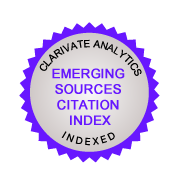Learning Approaches of Undergraduate Computer Technology Students: Strategies for Improvement
Keywords:
Higher education, computer technology, learning approachesAbstract
Purpose – In recent times, quality of graduates and their performance has been questioned. Students’ performance is an indicator of the kind of approach (deep or surface) that is taken. This study investigates the kind of undergraduates take in their learning processes. Methodology – This quantitative survey used Revised Two-Factor Study Process Questionnaire (R-SPQ-2F). Sixty-three students participated in the study. Findings – Results showed no significant difference between the types of approach by gender, nationality, year of study, and major. However, the rank ordering of the mean value indicated that almost all the students who participated in the study did not possess a deep approach to learning. The Pearson’s r analysis revealed a weak negative statistical correlation between the deep and surface approaches to learning and weak positive statistical correlation between surface strategy and deep approach. However, a significant relationship between deep strategy and deep approach (r = .903**, p < .01) was found. Significance – The lack of deep approach to learning among students can be attributed to factors such as the conditions of learning, professional capacity of teachers, and lack of instructional rigor in the program or coursework. It is imperative that emphasis is placed on using deep approaches to learning in the university courses so that deep learning experiences are created for students.Additional Files
Published
23-12-2012
How to Cite
Malakolunthu, S., & Joshua, A. (2012). Learning Approaches of Undergraduate Computer Technology Students: Strategies for Improvement. Malaysian Journal of Learning and Instruction, 9, 1–14. Retrieved from https://e-journal.uum.edu.my/index.php/mjli/article/view/7633
Issue
Section
Articles
























